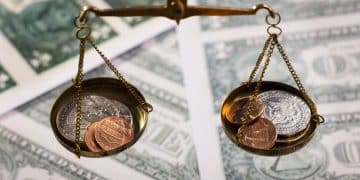Emergency Fund: Learn What It Is and How to Create Your Own

Anúncios
Amid life’s uncertainties, having a financial safety net is essential for facing unexpected events with tranquility and stability.
And that’s where the emergency fund comes in, an essential tool to ensure your long-term financial security.
In this article, we’ll explore what an emergency fund is and how you can set up your own. Keep reading to find out!
What is the purpose of an emergency fund?
An emergency fund is a reserve of money available to be used in unforeseen and urgent situations.
It acts as a financial cushion, providing security and peace of mind in times of crisis or financial difficulty.
From unexpected home repairs to unplanned medical expenses, an emergency fund can help cover these costs without resorting to larger loans or debt.
Additionally, in the event of job loss or a reduction in income, an emergency fund provides temporary financial support while you search for new opportunities or reorganize.
Another important consideration is that natural disasters, car accidents, or other emergencies can occur at any time.
Having a prepared emergency fund can help you face these situations without compromising your long-term finances.
Finally, knowing that you have a financial reserve available in case of need provides a sense of security and peace of mind, allowing you to focus on your long-term financial goals without worrying about unexpected events.
In other words, an emergency fund is an essential tool for financial health, offering protection against the unexpected and providing stability in times of uncertainty.
Understand the importance of having one
The idea of establishing an emergency fund may seem simple, but the importance of this resource goes far beyond the obvious.
Here are some key points that highlight why having an emergency fund is crucial for your financial health:
- Responding to Unexpected Situations: Life is unpredictable. An emergency fund is your safety net when unexpected events occur.
- Reducing Financial Stress: Financial worries are one of the main sources of stress for many people. Having a well-established fund can help alleviate this stress.
- Avoiding Debt and High Interest: Without an emergency fund, many people turn to credit cards or personal loans to cover unexpected expenses.
- Staying Financially On Track: A well-established fund not only protects against unexpected events but also allows you to continue following your long-term financial plan without significant interruptions.
Thus, an emergency fund is not just a precautionary measure, but rather a fundamental pillar of financial health.
It offers stability, security, and peace of mind in a world full of uncertainties, allowing you to navigate life’s turbulent waters with confidence and determination.
What is the ideal amount for an emergency fund?
Determining the ideal amount for your emergency fund is a personal matter and depends on various individual factors, such as your financial situation, lifestyle, and responsibilities.
However, there are some guidelines that can help you calculate an appropriate amount for your needs.
A general rule is to have three to six times your monthly expenses as an emergency reserve.
This ensures that you have enough to cover your basic expenses during an extended period of financial difficulty, such as job loss.
Additionally, consider specific factors that may increase your reserve needs, such as having dependents, fragile health, or working in an unstable industry. In these situations, it may be prudent to have a larger reserve.
If you have specific financial goals, such as buying a home or starting a business, it may be helpful to have a larger reserve to ensure that these plans are not compromised by financial emergencies.
In addition to regular monthly expenses, set aside additional funds for unexpected expenses such as home repairs, medical expenses not covered by insurance, or vehicle replacement.
Ultimately, the ideal value of your emergency fund is one that provides sufficient security and peace of mind to face unforeseen situations without compromising your long-term financial goals.
It is important to regularly review your financial needs and adjust your emergency reserve as necessary to ensure that it remains adequate for your circumstances.
Step-by-step guide to creating your emergency fund
Now that you have all these details about the emergency fund, it’s time to know how to create yours so that you have this financial tranquility.
Check out the step-by-step guide to setting up your emergency fund:
Define the savings amount
The first step in creating a fund is to determine the amount you want to save.
As mentioned earlier, a general rule is to have three to six times your monthly expenses as an emergency reserve.
However, this may vary depending on your individual circumstances and risk tolerance levels.
To calculate the ideal amount, add up all your essential monthly expenses, including housing, utility bills, food, and transportation.
Then, multiply this amount by the number of months of expenses you want to cover with your emergency fund. This will be the total amount you need to save.
Set a monthly goal
After determining the total amount for your emergency fund, divide that amount by the number of months you want to take to reach your goal.
This will give you a monthly goal to save. This way, you can organize yourself so that you can have a truly functional emergency fund that will bring you more peace of mind!
Create your account
Another important step is to create a separate account specifically for your fund.
This can be a savings account or a money market account, which offers easy access to funds but also generates some return on the deposited money.
Set up automatic transfers
After opening the account, set up automatic transfers from your checking account to your fund account.
You can do this through your bank, setting the frequency and amount of the transfer according to the monthly goal you have set.
Evaluate your progress
Regularly assess your progress toward your monthly savings goal. Check if the automatic transfers are occurring as planned and if you are able to achieve your monthly savings goal.
If you find it difficult to save the desired amount each month, reassess your expenses and find ways to reduce non-essential spending.
You may also consider gradually increasing the amount you are saving as your financial situation allows.
By putting these tips into practice, you can set up your emergency fund and have more financial peace of mind.
Take the opportunity to see more incredible tips on our website!





